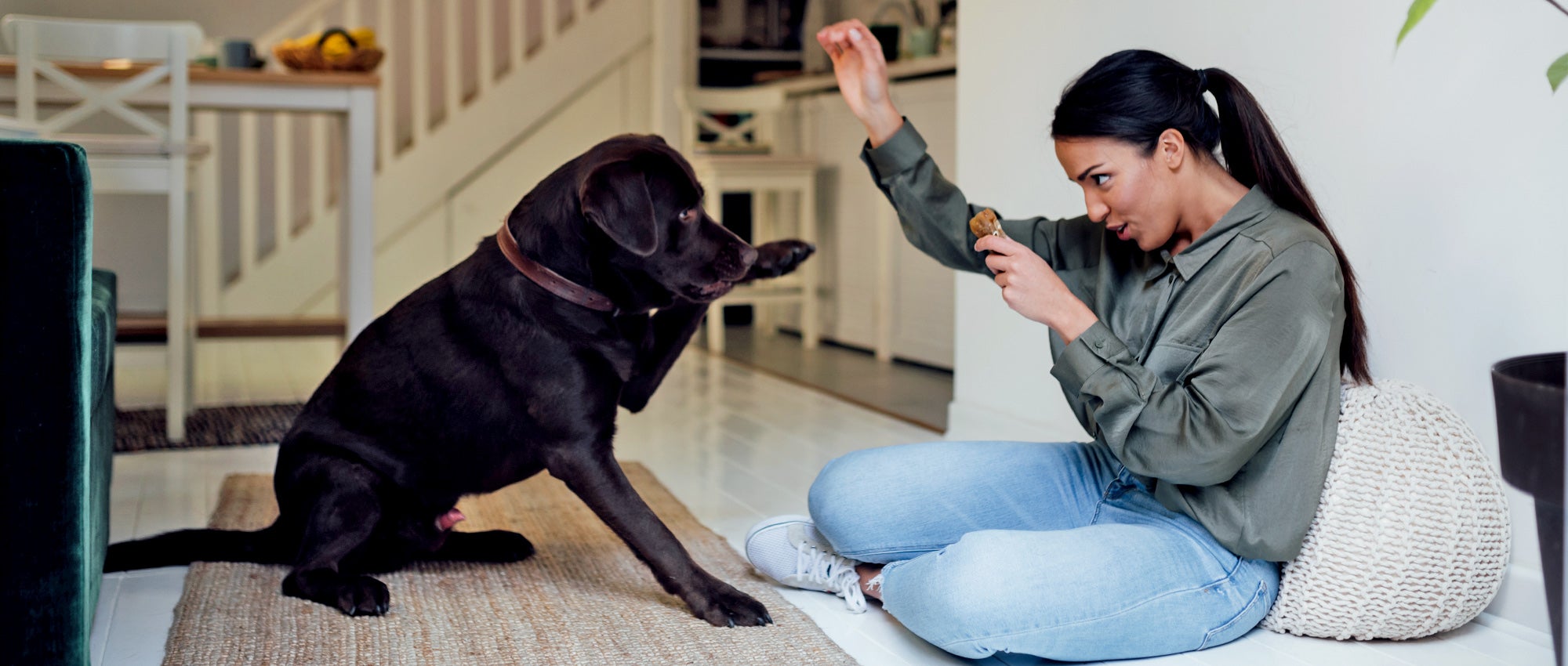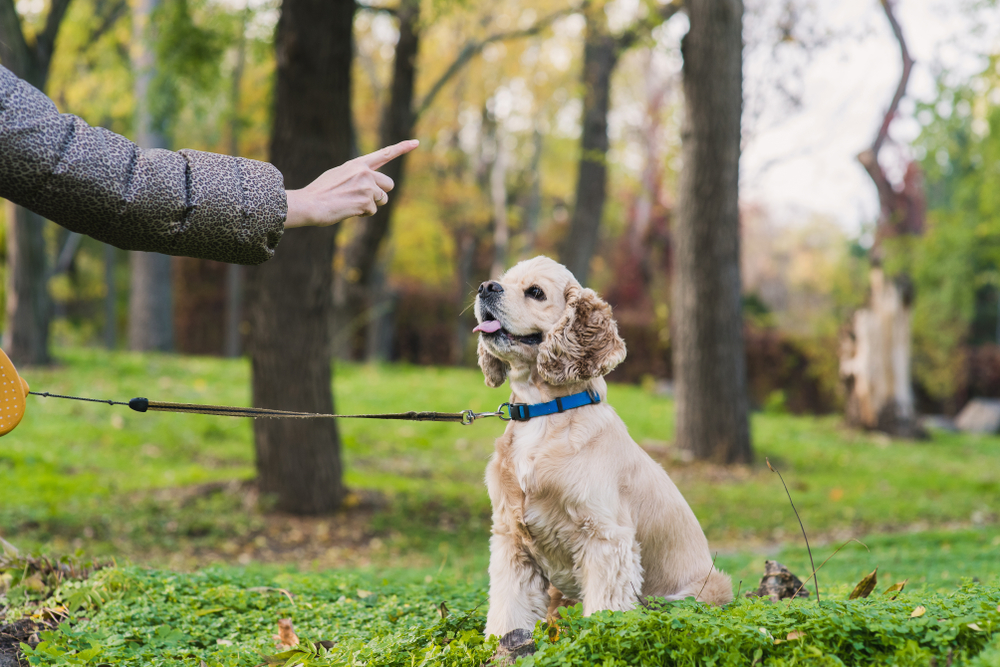How Dog Training Can Improve Your Pet's Quality of Life and Behavior
How Dog Training Can Improve Your Pet's Quality of Life and Behavior
Blog Article
Newbie's Guide to Effective Canine Training in your home
Efficiently training a pet at home needs a nuanced understanding of canine habits and effective communication methods. Establishing clear training objectives, utilizing high-quality rewards, and maintaining consistency across member of the family are critical components. In addition, incorporating training right into daily regimens can improve both engagement and retention. Several newbie instructors come across challenges that might impede development. To navigate these intricacies successfully, it's important to check out a number of crucial aspects that can change your approach and lead to a harmonious relationship with your pet. What fundamental concepts should every newbie understanding to make sure success?
Comprehending Pet Dog Behavior
Recognizing pet dog behavior is essential for efficient training and fostering an unified relationship in between people and their canine companions. Canines communicate largely with body movement, vocalizations, and faces, making it crucial for proprietors to interpret these signals properly. Recognizing habits such as tail wagging, roaring, or shrinking can give understandings right into a canine's emotion and purposes.

Usual behavioral issues, such as hostility, anxiousness, or excessive barking, often stem from misconceptions or unmet needs. Observing and resolving these concerns promptly can avoid rise and make certain a positive training experience. By fostering a deep understanding of pet dog behavior, proprietors can customize their training methods to suit their canine buddies, ultimately resulting in a pleased and well-behaved pet dog.
Important Educating Tools
A fully equipped training room can dramatically improve the effectiveness of canine training in your home. Necessary training tools make certain that both the trainer and the pet can involve in efficient sessions that foster discovering and bonding.

Buying a sturdy leash and a comfy, well-fitting collar or harness is important for safety and security and control. These devices aid develop borders and ensure the canine continues to be secure during training. Furthermore, an assigned training area, devoid of interruptions, aids focus for both the pet and the instructor.
Educating help such as training pads, cones, or agility tools can likewise boost the experience by presenting range and challenges. Last but not least, having a note pad or digital app for tracking progress can be important, allowing you to note successes and locations for improvement. Using these vital devices will produce a favorable training environment and lay the foundation for reliable discovering.
Creating a Training Regimen
Developing a regular training regimen is necessary for reliable pet training in the house. A well-structured regular not just aids in reinforcing wanted behaviors but likewise provides your dog with a complacency and predictability. To develop a reliable training regular, start by identifying particular training objectives, such as standard commands, leash strolling, or housebreaking.
Choose an assigned time daily for training sessions, ideally when your pet dog is alert and responsive. Sessions should be short, roughly 5 to 15 mins, to preserve emphasis and stop fatigue. Consistency in timing and setting will certainly boost your dog's discovering experience.
Include training into daily tasks to reinforce skills. As an example, practice commands during strolls or mealtime, which integrates discovering into all-natural regimens. Additionally, stay flexible and adjust the routine as needed, accommodating your pet's energy levels and mood.
Favorable Support Techniques
Favorable support methods are fundamental to reliable canine training, advertising preferred behaviors via benefits rather than penalty. This technique utilizes favorable stimuli, such as deals with, appreciation, or playtime, to encourage check that canines to repeat specific activities. The keystone of this method is timing; rewards need to be provided promptly following the wanted habits to develop a clear association.
When executing favorable reinforcement, it is vital to pick rewards that are inspiring for your pet. High-value treats, such as tiny items of hen or cheese, can be especially reliable throughout training sessions. Furthermore, differing the incentives can preserve your pet's interest and interest.
Beginning with easy commands, like "rest" or "remain," and slowly development to more complicated jobs. Uniformity is essential; make certain that all family participants make use of the very same commands and reward systems to prevent complication.
Moreover, it is crucial to continue to be client and stay clear of irritation. Dogs, like human beings, learn at their very own rate. By fostering a helpful training setting through positive support, you can enhance your canine's understanding experience while strengthening the bond between you and your hairy companion, preparing for successful training outcomes.
Typical Training Obstacles
While training a dog in the house can be a fulfilling experience, it commonly features a set of usual obstacles that can evaluate both persistence and consistency. One widespread problem is diversion. Pet dogs may become easily sidetracked by noises, movements, or even fragrances in their atmosphere, making it tough to keep their emphasis throughout training sessions.
One more difficulty is variance in commands and support. If relative make use of various signs or incentives, it can impede and perplex the dog progress. Developing a unified approach is vital for reliable interaction.
Furthermore, pet dogs can experience aggravation or anxiety, particularly if they do not comprehend what is expected of that site them. This can bring about unwanted habits, such as barking or chewing.
Lastly, the timing of support is important (Dog training). Delayed rewards can diminish the performance of positive support, as pet dogs might fail to connect the behavior with the incentive
Getting rid of these obstacles calls for dedication, clear interaction, and an organized training strategy. Acknowledging and resolving these typical barriers will pave the method for an extra effective and satisfying training experience in your home.
Conclusion
Finally, effective dog training at home necessitates a comprehensive understanding of canine habits and efficient interaction techniques. By establishing clear training goals and using top quality deals with together with positive reinforcement, the training procedure comes to be much more fulfilling for both the trainer and the pet dog. Adaptability, perseverance, and consistency are necessary parts that facilitate knowing. Inevitably, incorporating training right into daily routines improves the bond in between dog and owner, making the experience both delightful and efficient.
Establishing a consistent training routine is essential for reliable pet training at home.Favorable support methods are essential to effective pet training, advertising preferred behaviors through incentives instead than penalty (Dog training). By promoting a supportive training environment through positive reinforcement, you can improve your pet dog's understanding experience while enhancing the bond in between you and your furry buddy, laying the foundation for effective training results
In final thought, successful canine training at home necessitates an extensive understanding of canine habits and effective interaction read what he said techniques. By establishing clear training objectives and using top quality deals with together with positive support, the training process comes to be much more rewarding for both the instructor and the pet dog.
Report this page